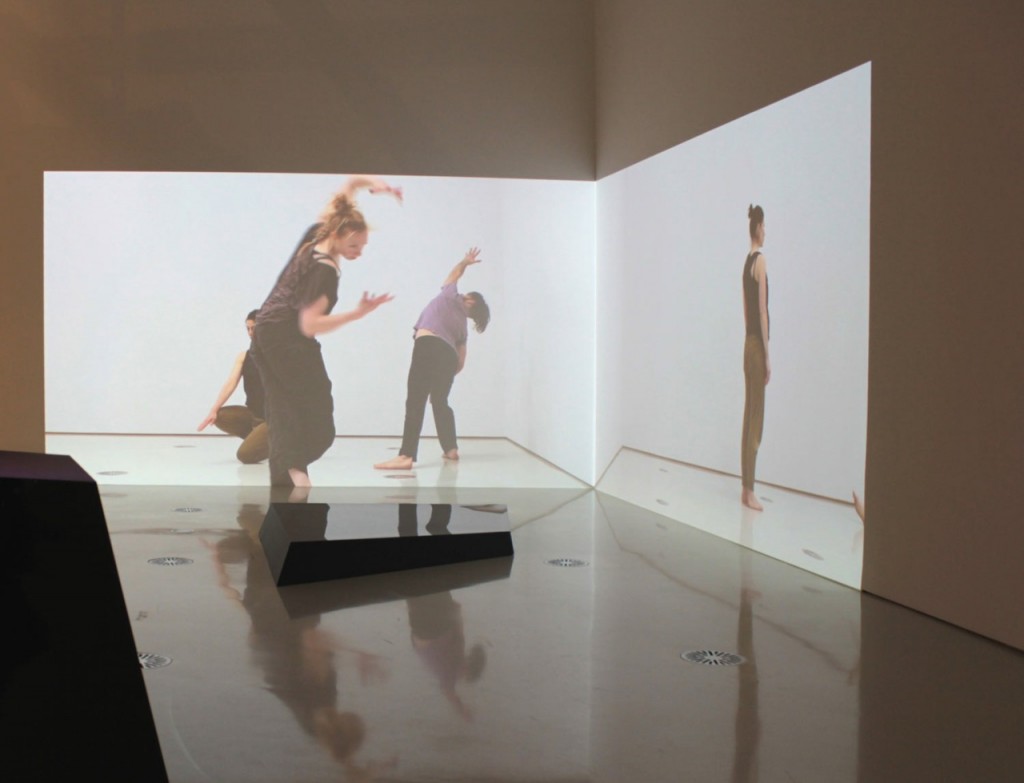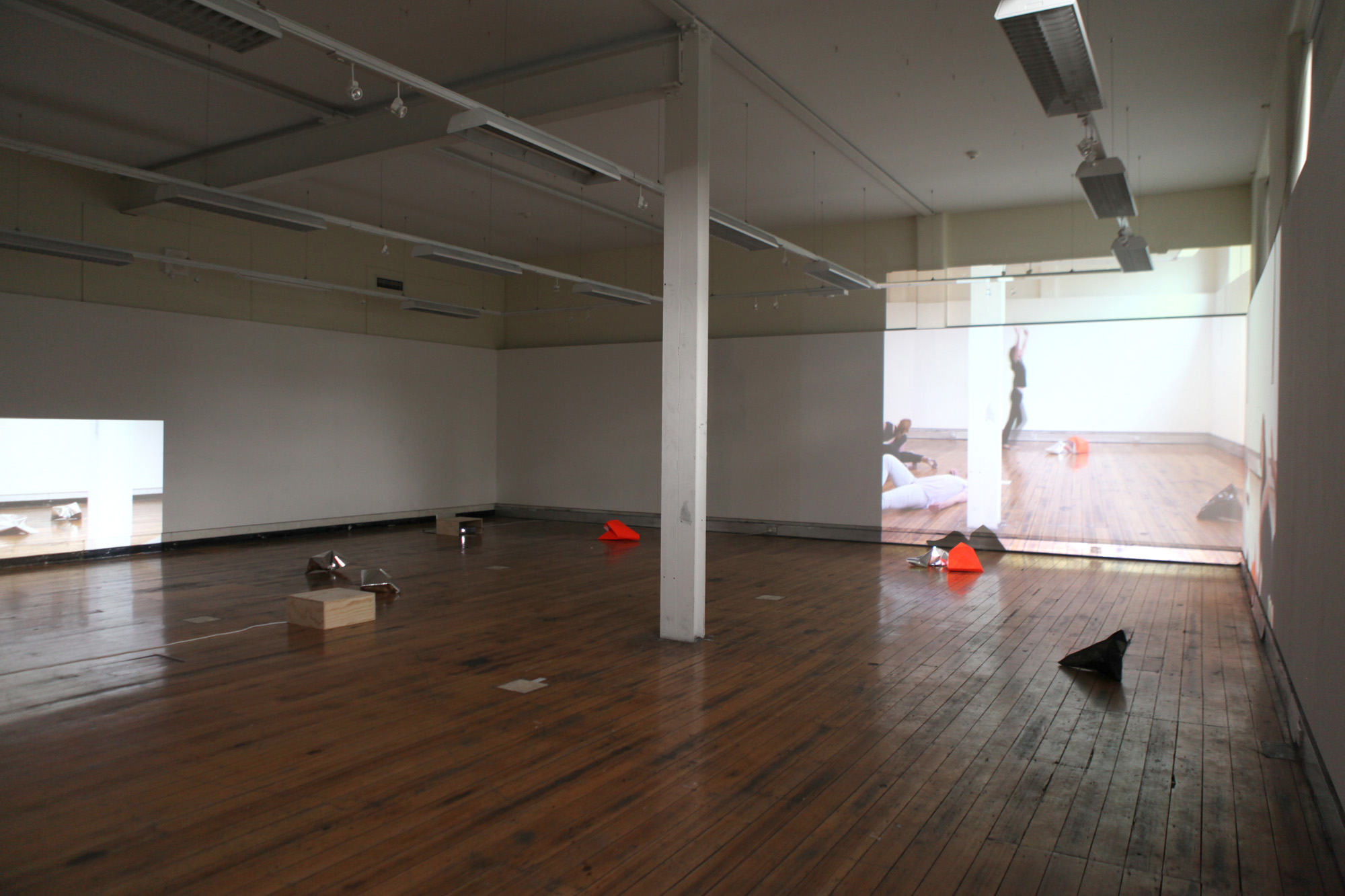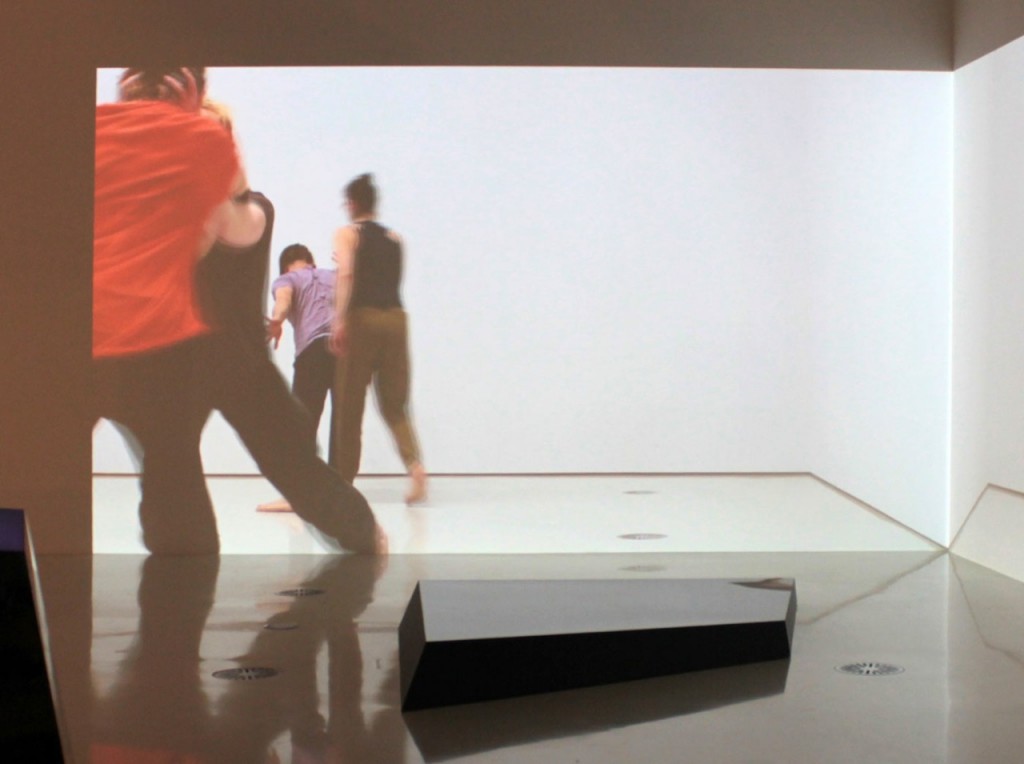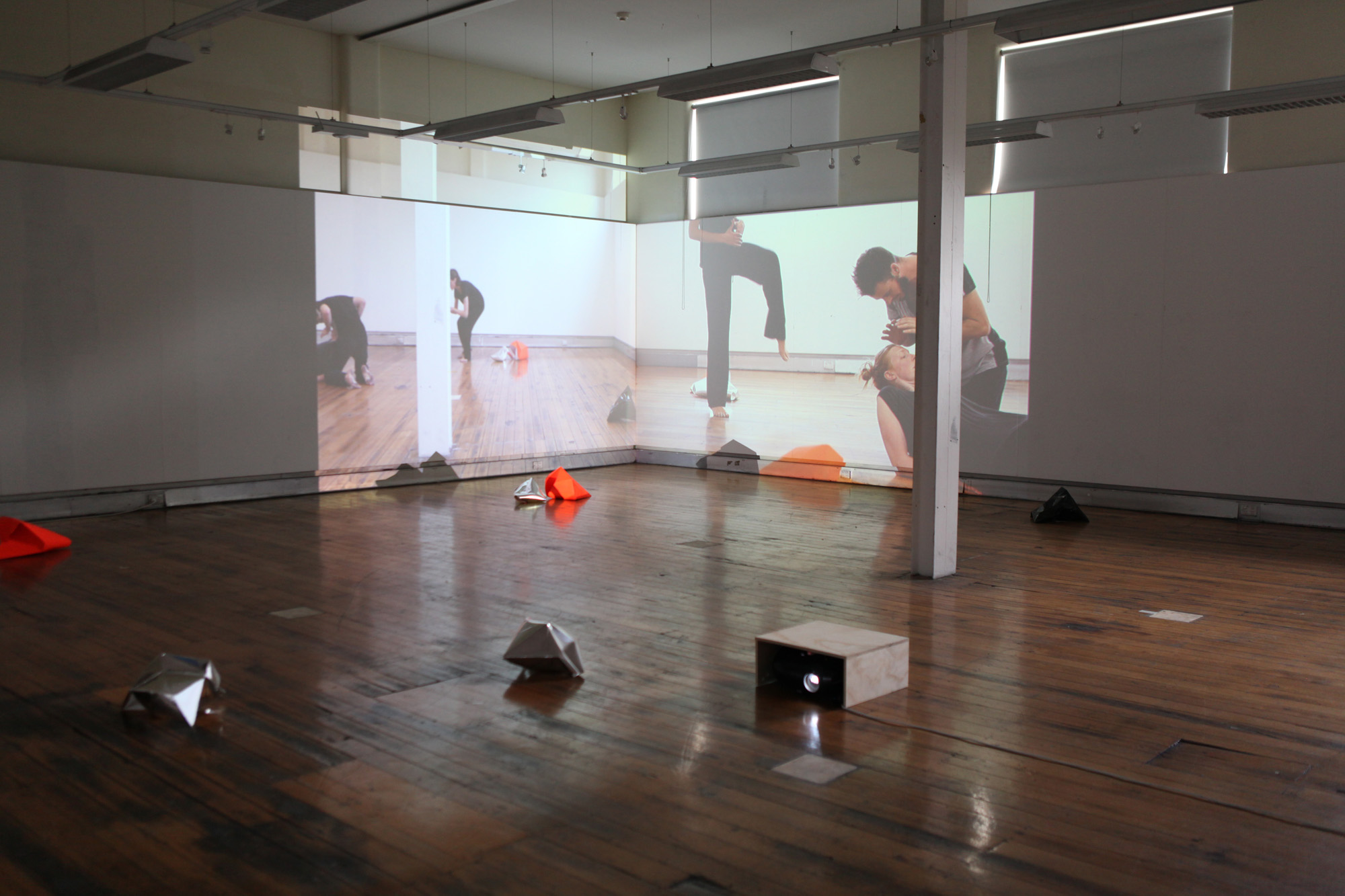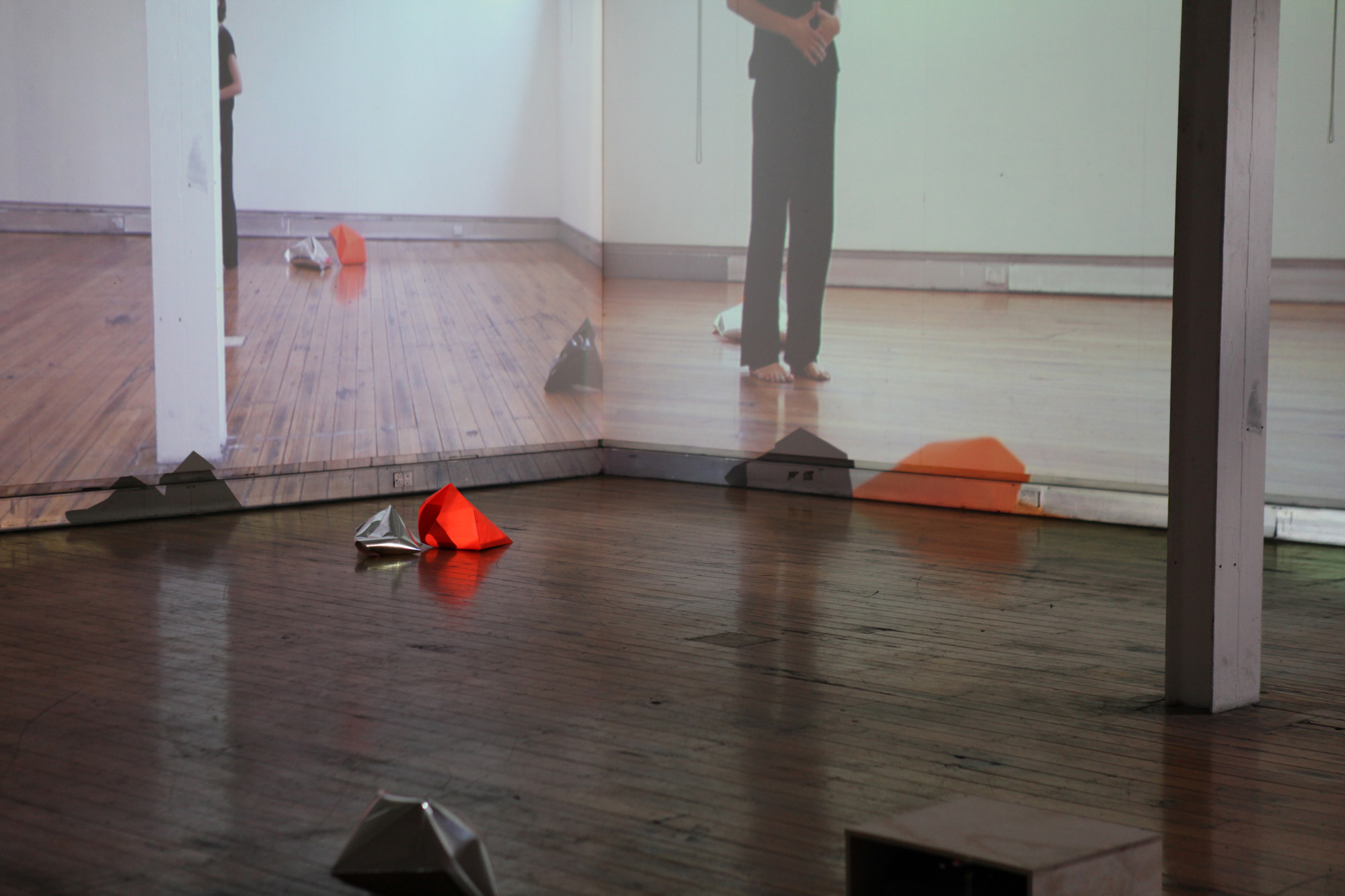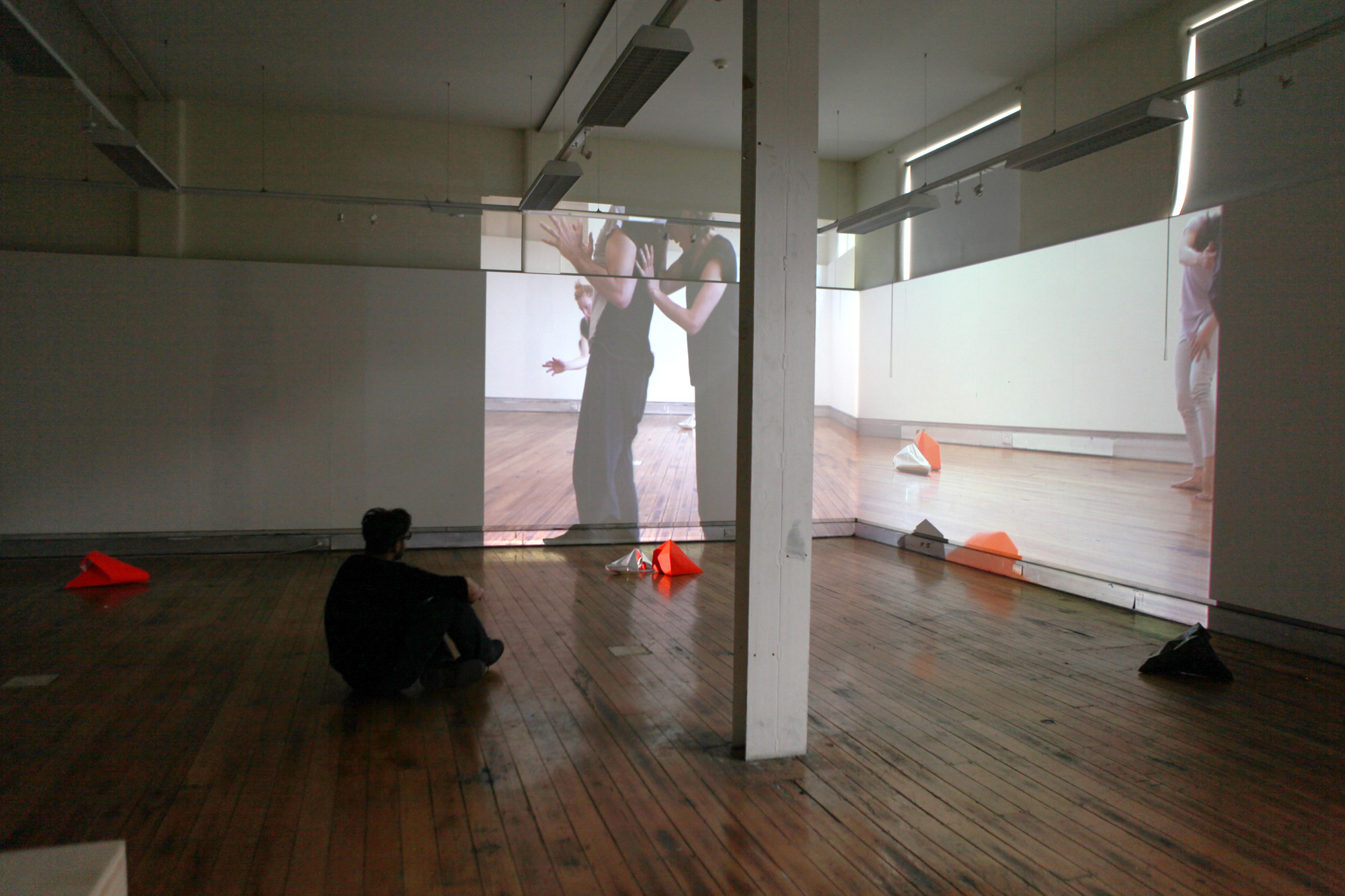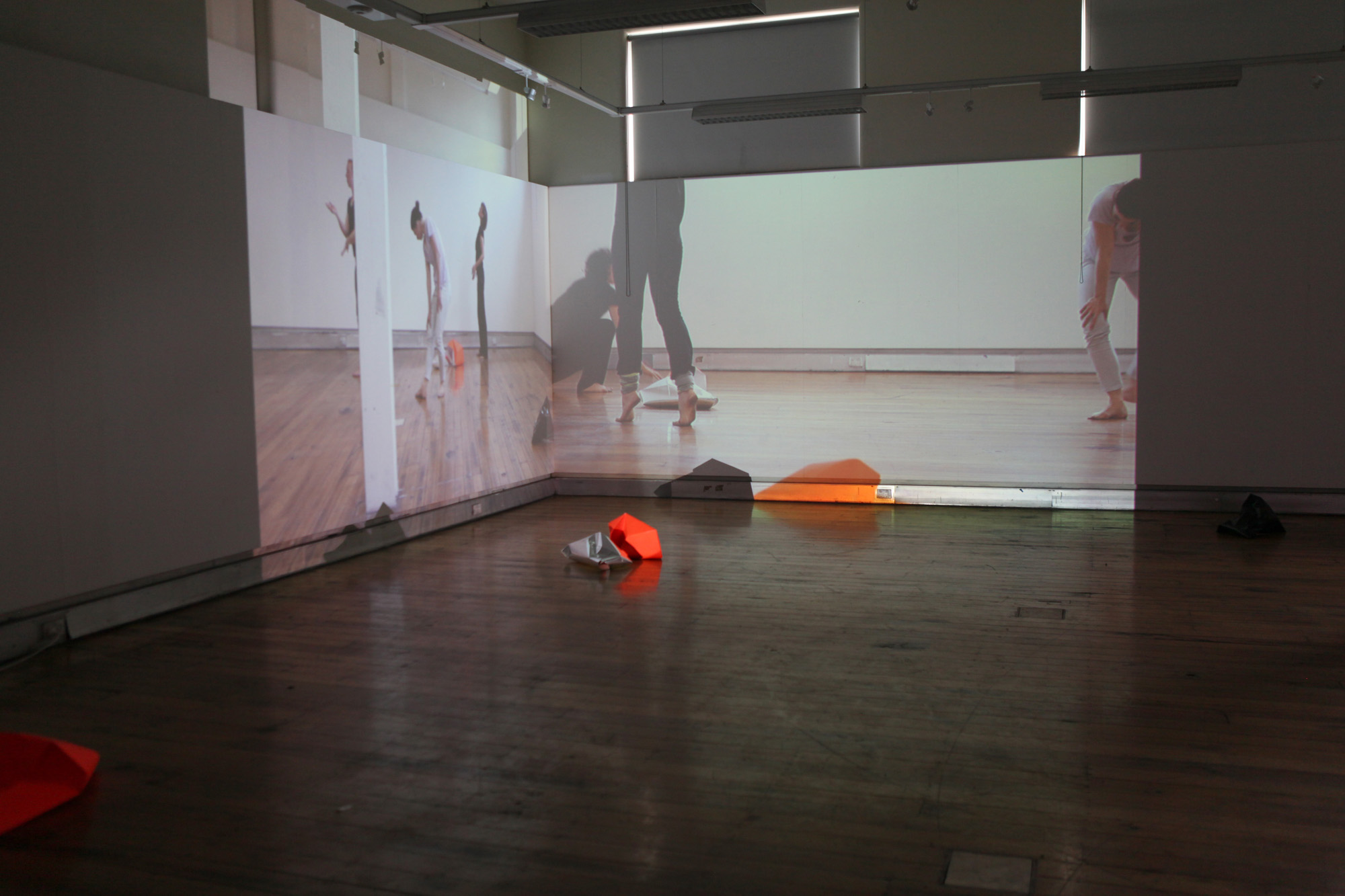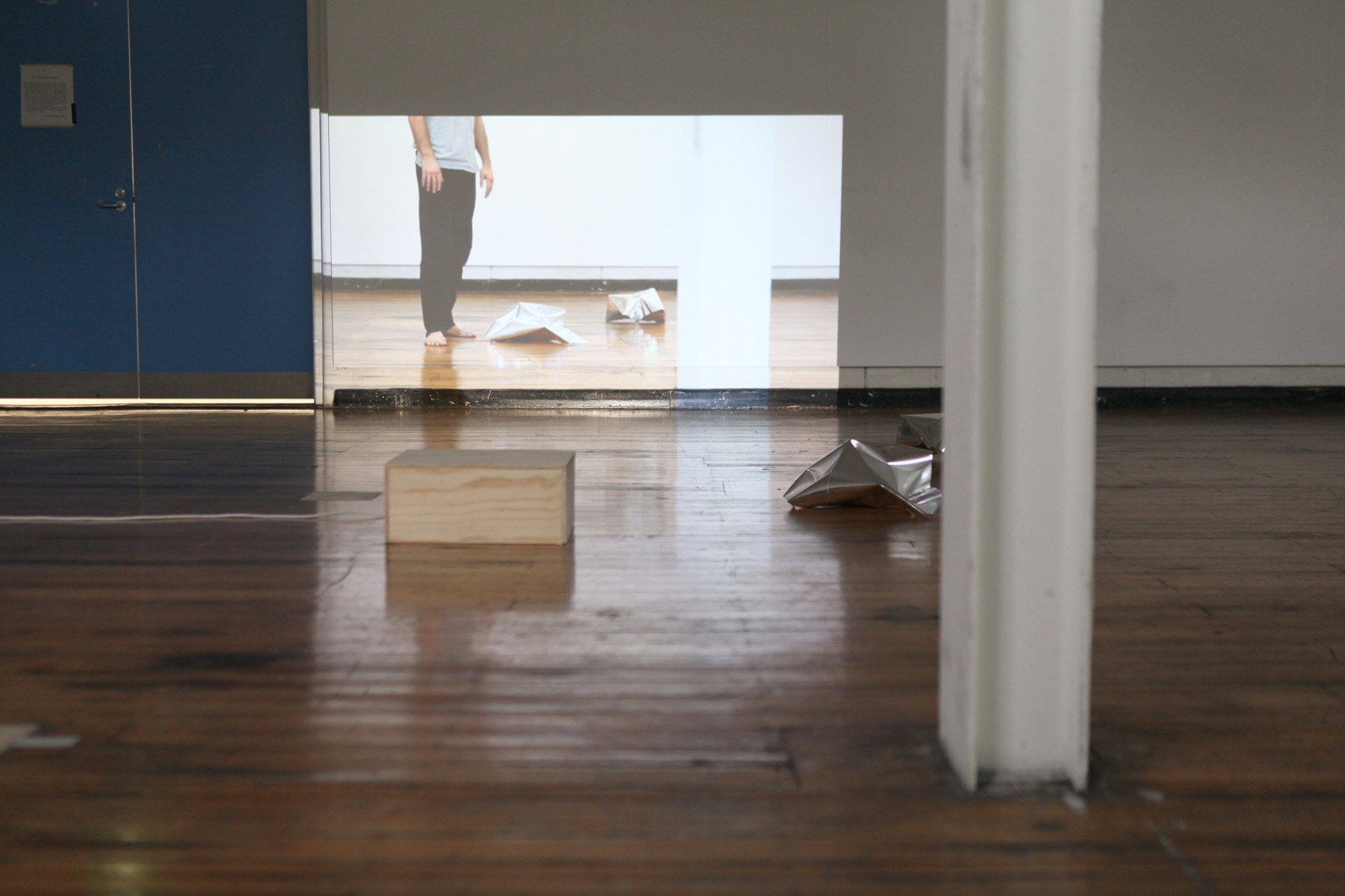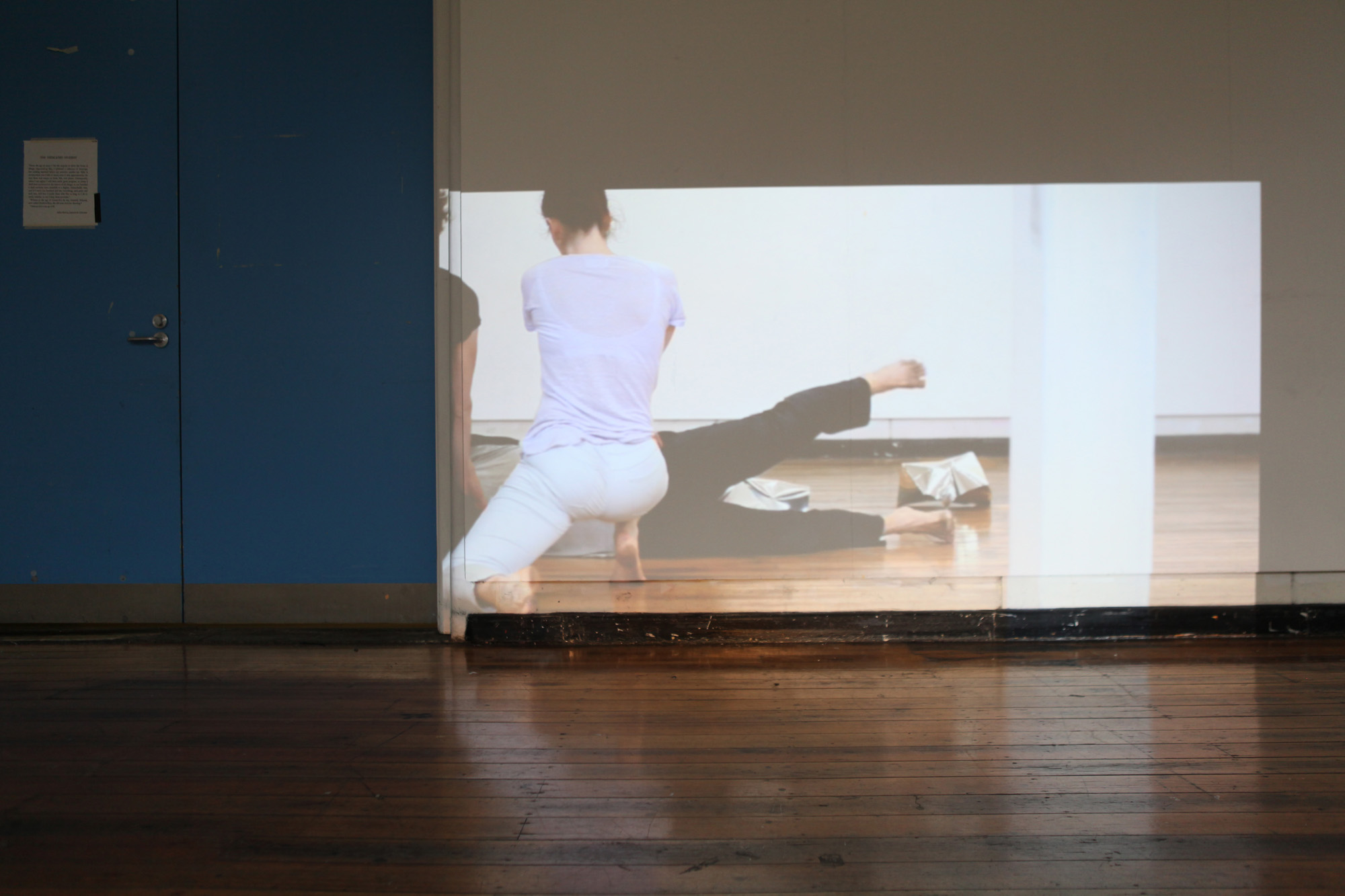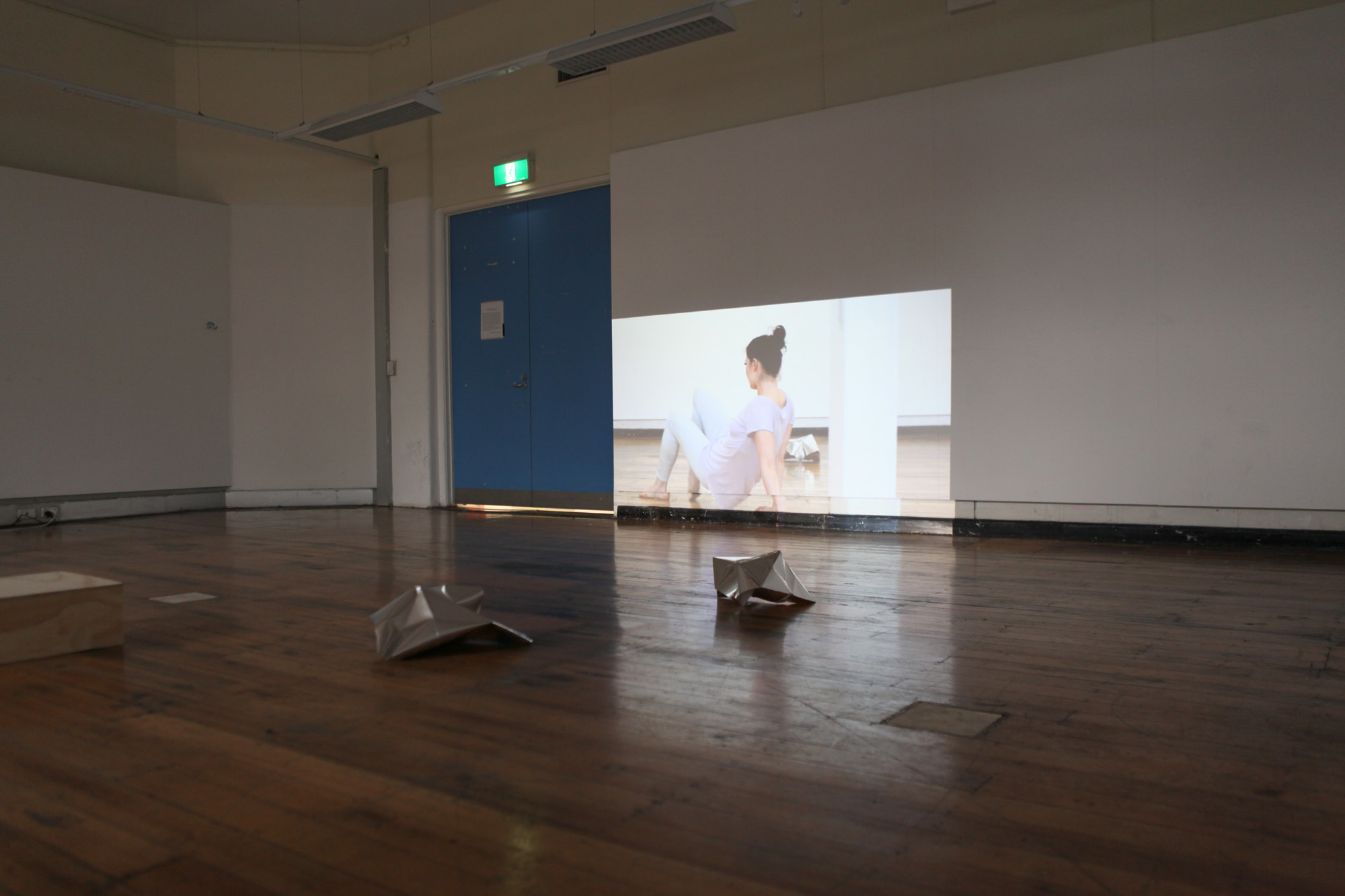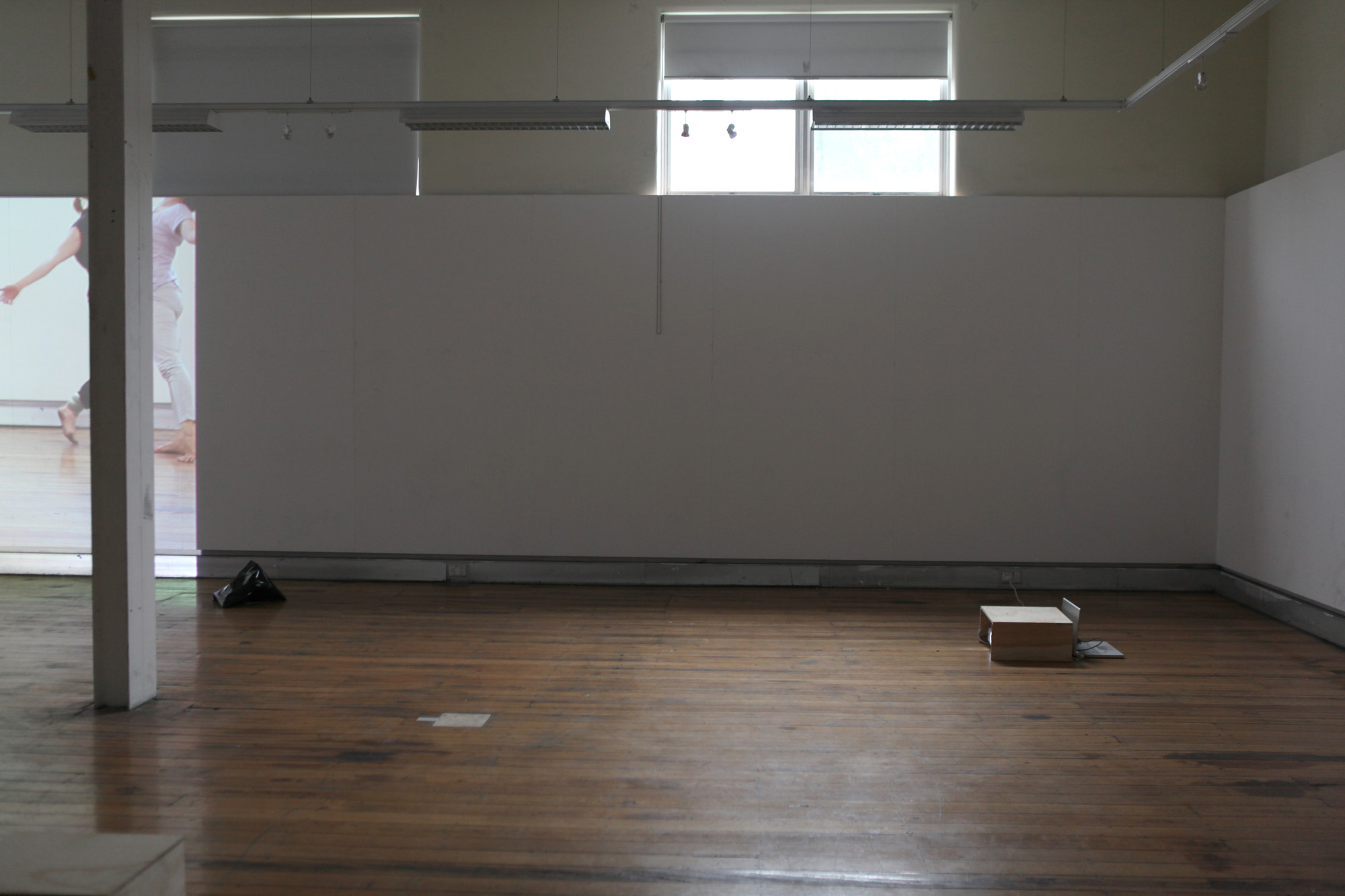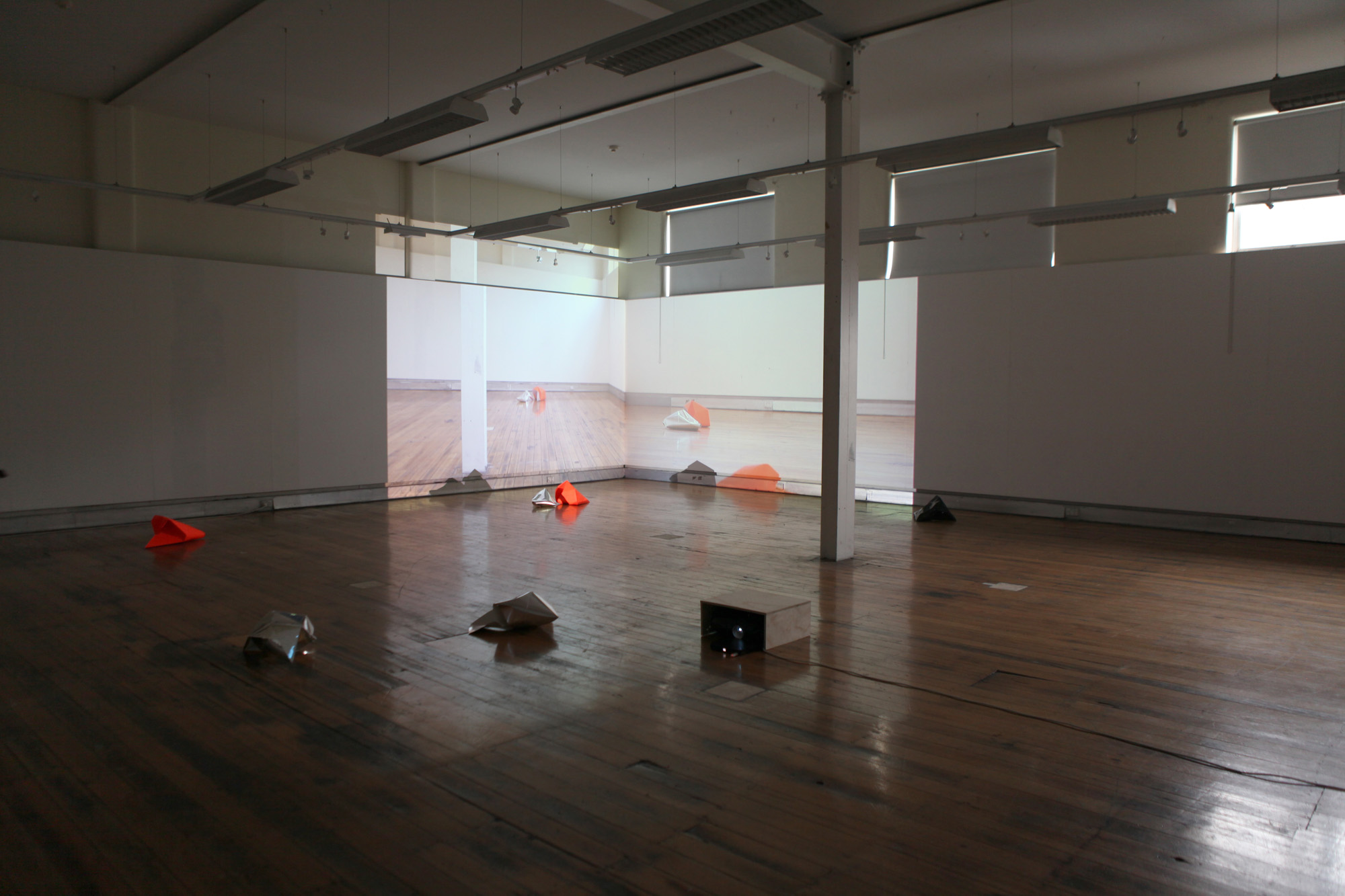VIANNE AGAIN
In 2008, Lasica presented VIANNE, a collaborative project that explored the concept of an imagined memory of a particular place and time.
VIANNE AGAIN (2012) returned to this rich material and continued to probe at the construction of memory and emotional space. The original dancers come together again for the performance, to create a strange and mysterious echo of the earlier work.
VIANNE AGAIN (2012) was presented in configurations and at venues that are spaces that generate creative practice other than dance. The first at Monash University Caulfield campus, School of Art, the second at the Iwaki Auditorium, ABC Southbank Centre, and third at RMIT Design Hub, RMIT University.
Drawing Room D112, School of Art, Monash University Caulfield campus, Melbourne, 6 September.
Iwaki Auditorium, ABC Southbank Centre, Melbourne, 15 September.
Project credits
- Choreography
- Shelley Lasica
- Performers
- Deanne Butterworth, Timothy Harvey, Jo Lloyd, Bonnie Paskas
- Mise-en-scène
- Anne-Marie May
- Wardrobe
- Shelley Lasica
- Sound score
- Milo Kossowski, Morgan McWaters, Antuong Nguyen
- Lighting
- Ben Cobham
- Supported by
- Arts Victoria and Lucy Guerin Inc.
INSIDE THURSDAY - VIANNE AGAIN (Drawing Room D112, MADA) 2012
This installation work by Helen Grogan was a contribution to Shelley Lasica’s choreographic project VIANNE AGAIN and was developed in close conversation with Lasica. Objects by Anne-Marie May are visible in this work. Made for Monash University Caulfield, Melbourne and online as ongoing photographic and video documentation.
LINK TO ONLINE VIDEO ITERATION
INSIDE VIANNE AGAIN (National Gallery of Victoria) 2013
was a collaborative installation by Helen Grogan, Shelley Lasica and Anne-Marie May as part of Melbourne Now at National Gallery of Victoria International.
Project Credits
- Artists
- Shelley Lascia, Helen Grogan, Anne-Marie May
- Performers
- Deanne Butterworth, Timothy Harvey, Jo Lloyd, Bonnie, Bonnie Paskas
- Videographer & Camera Technician
- Anna Gilby
- Camera Technician
- Laura May Grogan
- NGV Sound Design
- Benjamin Walbrook
VIANNE, VIANNE, again; or, the same another
–By Justin Clemens
The French linguist Jean-Claude Milner once noted a peculiar feature of many languages, whereby apparent antitheses can come to mean the same thing. The same, says the barfly, pointing at an empty beer glass, another. Repetition of what’s not there, alteration of the opposites. But a contrary situation can also hold. Take the incident in which the famous philosopher J.L Austin announced that, while double negatives could be a negative. ‘Yeah yeah’, Sidney Morgenbesser interjected from the back of the room. So repetition enables the compaction of contradictions, as well as inversions of sense. But for that to happen, one needs a memory, and an attention to the modulations of the act: no beer, not another philosopher…all kinds of movements of the body, as it happens, that presume the body they underplay and which dance out expectations to the will.
People sometimes say that the essence of performance is its singularity, the you-had-to-be-there aliveness. It happens once and only once, even if the same dance repeats night after night. Everyone knows you can repeat every movement precisely, with remarkably different effects. The doubling or splitting of the same letter can give you another: V, W. Wien, Vienna, Vianne- selections, combinations, substitutions, repetitions, capitalizations, the names of real places and imagined personages, the same another. And what if the performance was itself an experiment with the problem of performing the same thing, again? The performance would no longer be this or that performance or even the differences between them, but the performing of performances, expanding the sense of the different differences between performances as self- similarity under variant conditions. As Brandon Chua claims, the encore, the again, or, again, the en-corps, the embodies, began as an interruption of performance- the audience, for example, calling for another rendition of the same aria, at the very moment it was finished in the middle of the opera- not as a call for prolongation after its official conclusion. Problems turn into questions and questions, movements. The same body becomes other to itself; other bodies become organs of the self; the end is folded into the middle; the middle produces differences.
Consider the V, again, like two fingers raised in an obscene or victory gesture or two legs opened in the air or abstract point of a fat pencil pressing down on an invisible line with orthogonal intensity or the cartoon mouth of a supine character or the double-n, like rounded hills or breasts or the soft ears of a rabbit poking over a hill, the whole terminating in a lower –case e like a busted little theta. Letters are bodies too, or part-bodies, that move upon a page or screen as dancers in a place, a place they inscribe with their effects. No letter can exist as a letter without the possibility of its repetition in another place, without its cursive mobility, without the tiny twist of a perhaps invisible comma that marks a little breath or a pause or a turn of the body or of sense. Writing should be a dance of the pen, wrote mad Friedrich Nietzsche, though he was not thinking of mad Nijinski, whose body also danced his thought.
So the desire to dance the same another, again is already in excess of its proper place, glorious and poisonous, the doubling of memory and madness, the divagations of the body and the arabesques of sense. Here, there, now, then, VIANNE, again.
